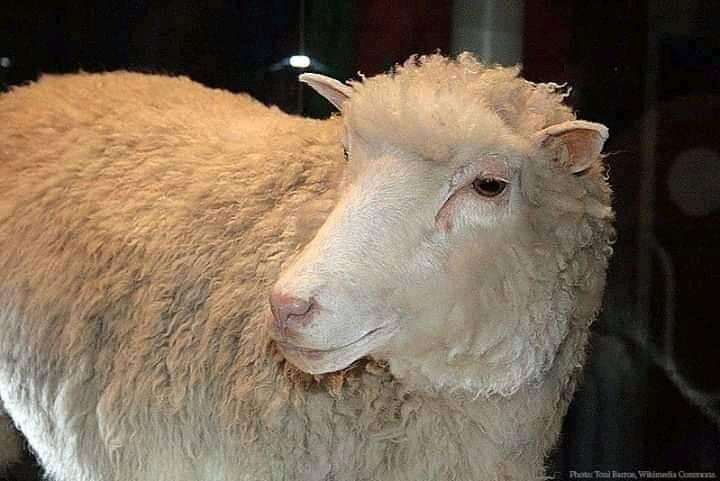DOLLY:THE FIRST MAMMAL CLONED
Dolly was cloned by Keith Campbell, Ian Wilmut and colleagues at the Roslin Institute, part of the University of Edinburgh, Scotland, and the biotechnology company PPL Therapeutics, based near Edinburgh. The funding for Dolly’s cloning was provided by PPL Therapeutics and the Ministry of Agriculture.
Originally code-named “6LL3,” the cloned lamb was named after singer and actress Dolly Parton. The name was reportedly suggested by one of the stockmen who assisted with her birth, after he learned that the animal was cloned from a mammary cell. The cells had been taken from the udder of a six-year-old ewe and cultured in a lab using microscopic needles, in a method first used in human fertility treatments in the 1970s. After producing a number of normal eggs, scientists implanted them into surrogate ewes; 148 days later one of them gave birth to Dolly.
Dolly’s birth was announced publicly in February 1997 to a storm of controversy. On one hand, supporters argued that cloning technology can lead to crucial advances in medicine, citing the production of genetically modified animals to be organ donors for humans as well as “therapeutic” cloning, or the process of cloning embryos in order to collect stem cells for use in the development of treatments for degenerative nerve diseases such as Alzheimer’s and Parkinson’s. Some scientists also looked at animal cloning as a possible way to preserve endangered species. On the other hand, detractors saw the new cloning technology as potentially unsafe and unethical, especially when it was applied to what many saw as the logical next step: human cloning.

Compile by Dr Satish chaudhary.


